Previously: What is American Power?
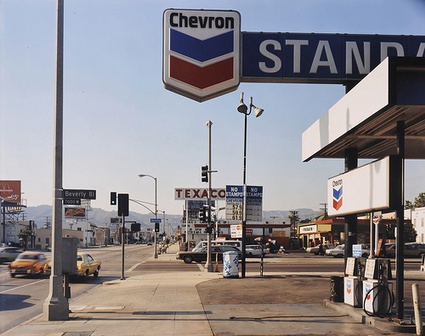 Stephen Shore, La Brea Ave. & Beverly Bvd., Los Angeles, California, 6/21/1975
Stephen Shore, La Brea Ave. & Beverly Bvd., Los Angeles, California, 6/21/1975
1950, Robert Frank published the seminal book The Americans in the United States. The photos showed a country that his peers had mostly overlooked so far: workers in a Detroit assembly line, an exhausted waitress in Hollywood, an empty barbershop, transvestites in NYc, shabby corners of a department store, gas station, black passengers on a segregated trolley in New Orleans, onlookers at a movie premiere, etc. Images that we take for granted now, At the time, however, critiques were horrified by their style and subject.
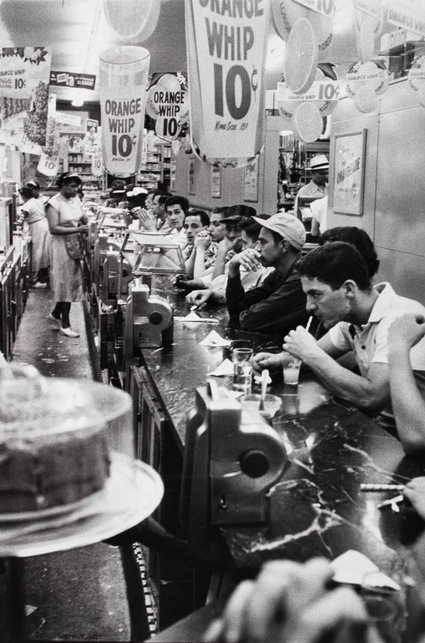 Robert Frank, Drugstore, Detroit, 1955. © Robert Frank, from The Americans. Detroit Institute of Arts
Robert Frank, Drugstore, Detroit, 1955. © Robert Frank, from The Americans. Detroit Institute of Arts
1975, the George Eastman House (Rochester, NY) opens the influential New Topographics: Photographs of a Man-Altered Landscape. 8 young American photographers + Bernd and Hilla Becher presented their dispassionate appraisal of landscape, focusing on “eyesores” of the built environment such as industrial landscapes, suburban sprawl, cheap motels, trailer parks, parking lots.
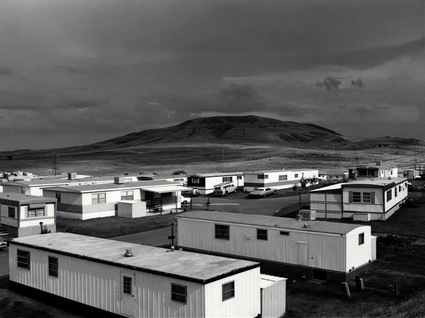 Robert Adams, Mobile Homes, Jefferson County, Colorado, 1973; George Eastman House collections; © Robert Adams, courtesy of Fraenkel Gallery, San Francisco, and Matthew Marks Gallery, New York
Robert Adams, Mobile Homes, Jefferson County, Colorado, 1973; George Eastman House collections; © Robert Adams, courtesy of Fraenkel Gallery, San Francisco, and Matthew Marks Gallery, New York
As New Topographics: Photographs of a Man-Altered Landscape has been reprogrammed for an international tour, American Documents, a major exhibition at FotoMuseum in Antwerp, is offering a brief and efficient panorama of the documentary trends in the U.S. from the 1970 until now.
Extract from the press release:
The photographers point to a social issue that is still relevant nowadays. Rampant industrialization and urbanization fed by an excessive consumption drive left a profound mark on both the American landscape and American society during the second half of the previous century. At the same time, these developments formed the breeding-ground for a critical countermovement. A new photographic picture language developed that abruptly abandoned the idealizing views of previous generations and confronted the audience in a critical manner with key social and political issues. Thanks to its serial approach and clear formulation, this type of photography fit in perfectly with the then conceptual and minimalist trends in plastic arts.
Besides the historic works, two recent series have joined the exhibition: Homeland (2007-2009) by Larry Sultan, and What is American Power?“>American Power by Mitch Epstein.
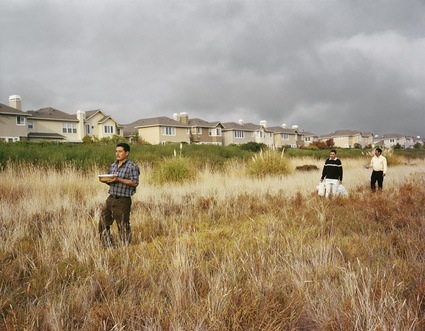 Larry Sultan, Canal District San Rafael, 2006
Larry Sultan, Canal District San Rafael, 2006
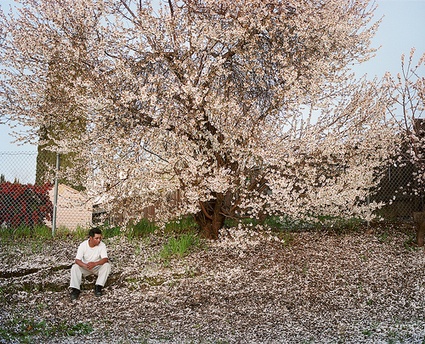 Larry Sultan, Antioch Creek, 2008. From the series : Homeland. © The Estate of Larry Sultan. Courtesy Gallery Thomas Zander, Cologne
Larry Sultan, Antioch Creek, 2008. From the series : Homeland. © The Estate of Larry Sultan. Courtesy Gallery Thomas Zander, Cologne
Homeland addresses the issue of illegal immigration near the US border. The title is a reference to the US Department of Homeland Security.
Sultan hired Mexican day laborers whom he found waiting outside a strip mall to be picked up for hourly work. Sultan directed them to create vignettes that fuse his own memories of home life with an interpretation of their experiences as exiles. The result is a series of postcard photos of American suburbs charged with oddity, unease and hope.
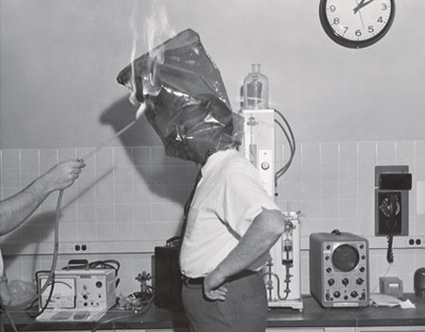 ©Mike Mandel and Larry Sultan, Evidence
©Mike Mandel and Larry Sultan, Evidence
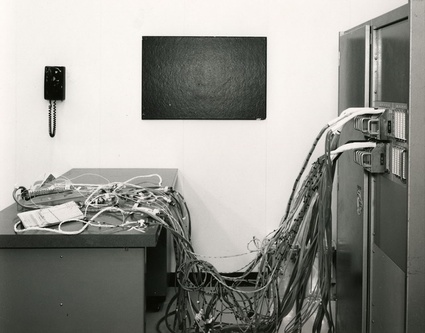 ©Mike Mandel and Larry Sultan, Evidence
©Mike Mandel and Larry Sultan, Evidence
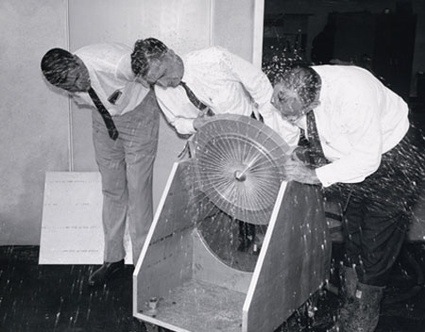 ©Mike Mandel and Larry Sultan, Evidence
©Mike Mandel and Larry Sultan, Evidence
In the ’70s photographers Larry Sultan and Mike Mandel spent 3 years sifting through the files and archives of over one hundred American government agencies, educational institutions, and corporations, such as the U.S. Department of the Interior, Stanford Research Institute, General Atomic Company, Jet Propulsion Laboratories, the various Police Department and the United States Department of the Interior. They were looking for original photographs that were made and used as evidence.
Mandel and Sultan assembled a sequence of 50 to 85 pictures (depending on the website where i found information about the project) out of the hundreds of thousands they had seen. Pictures that once served a functional purpose in the world, when stripped of their explanatory captions and sources and then exhibited in an art show, acquired a new dimension. The photos of the Evidence book and exhibition were not objective instruments anymore, they became expressive, puzzling, ambiguous artefacts from the mid-20th century. More images in Mike Mandel’s flickr set.
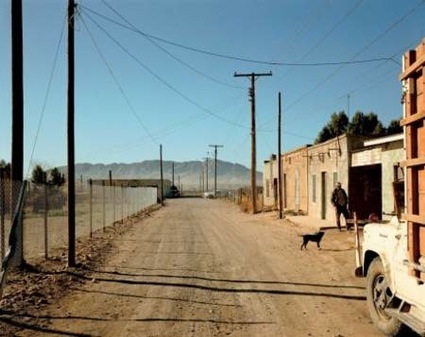 Stephen Shore, Presidio, Texas, February 21, 1975
Stephen Shore, Presidio, Texas, February 21, 1975
Uncommon Places is the result of a series of cross-country trips that Stephen Shore made through American and Canadian towns and landscapes. The series pioneered the use of colour outside of advertising and fashion.
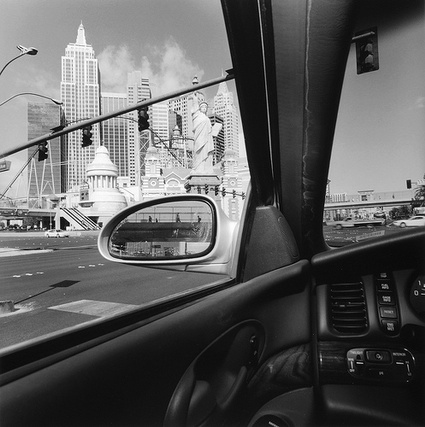 © Lee Friedlander, Las Vegas, 2002, from the series: America by Car. Courtesy Fraenkel Gallery, San Francisco ; Gallery Thomas Zander, Cologne
© Lee Friedlander, Las Vegas, 2002, from the series: America by Car. Courtesy Fraenkel Gallery, San Francisco ; Gallery Thomas Zander, Cologne
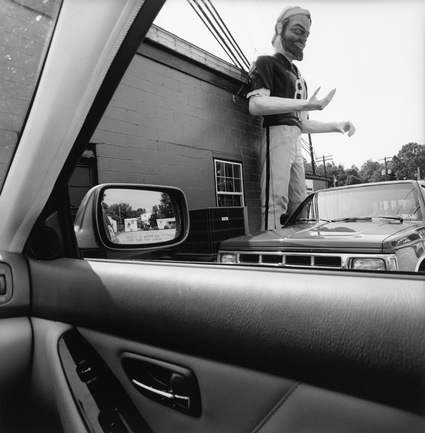 © Lee Friedlander, Pennsylvania, 2007, from the series: America by Car
© Lee Friedlander, Pennsylvania, 2007, from the series: America by Car
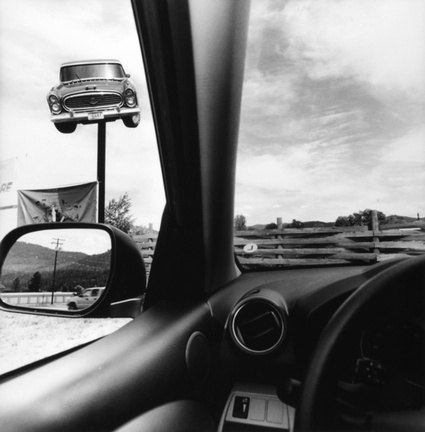 © Lee Friedlander, from the series: America by Car
© Lee Friedlander, from the series: America by Car
More recently, Lee Friedlander drove across the US and, sitting in his rental car, documented the landscape and cityscape of his country. The method not only reflects how much the American landscape is framed by the US car culture, it also allows for surprising juxtapositions.
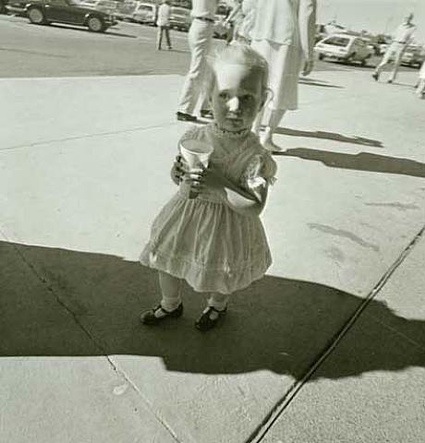 Robert Adams, Denver, Colorado, 1983
Robert Adams, Denver, Colorado, 1983
For Our Lives and Our Children: Photographs Taken Near the Rocky Flats Nuclear Weapons Plant, Robert Adams concealed his camera behind a grocery bag to snap portraits of families who lived near the Rocky Flats nuclear weapons plant outside Denver. The facility processed plutonium, a radioactive chemical element that ignites spontaneously in contact with moist air and caused many fires at the plant, threatening all those living in the area.
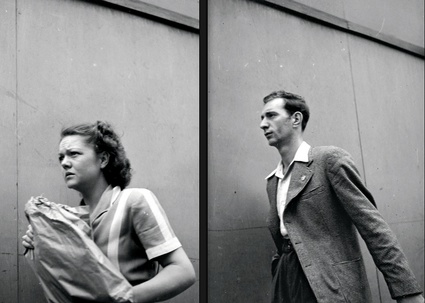 Walker Evans, both images from the series Labour Anonymous, studies of pedestrians in Detroit, Michigan, commissioned by Fortune magazine, 1946
Walker Evans, both images from the series Labour Anonymous, studies of pedestrians in Detroit, Michigan, commissioned by Fortune magazine, 1946
Adams’ clandestine method of portraying anonymous figures is reminiscent of Walker Evans‘s work. For the 1930s series Subway Portrait, Evans kept his camera hidden under his coat and captured the person opposite unobserved. 15 years later, Evans stationed himself at a corner of a street, opposite a blind wall and shot anonymous figures as they were moving through space.
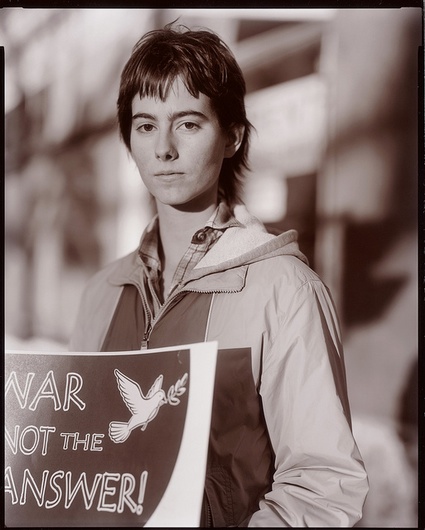 ©Judith Joy Ross, Annie Hasz, Easton, Pennsylvania, 2007. Courtesy Pace/MacGill Gallery New York ; Sabine Schmidt Gallery, Cologne
©Judith Joy Ross, Annie Hasz, Easton, Pennsylvania, 2007. Courtesy Pace/MacGill Gallery New York ; Sabine Schmidt Gallery, Cologne
American Documents is on view until September 5, 2010 at FotoMuseum in Antwerp, Belgium.
